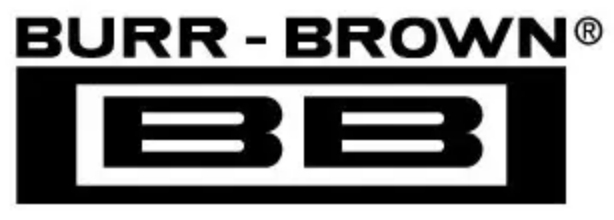DISCUSSION OF
SPECIFICATIONS
LINEARITY ERROR
Linearity error is defined as the deviation of the analog
output from a straight line drawn between the end points of
the transfer characteristic.
DIFFERENTIAL LINEARITY ERROR
Differential linearity error (DLE) is the deviation from
1LSB of an output change from one adjacent state to the
next. A DLE specification of
±1/2LSB
means that the output
step size can range from 1/2LSB to 3/2LSB when the digital
input code changes from one code word to the adjacent code
word. If the DLE is more positive than –1LSB, the D/A is
said to be monotonic.
MONOTONICITY
A D/A converter is monotonic if the output either increases
or remains the same for increasing digital input values.
Monotonicity of DAC715 is guaranteed over the specifica-
tion temperature range to 13-, 14-, 15-, and 16-bits for
performance grades DAC715P/U, DAC715PB/UB,
DAC715PK/UK, and DAC715PL/UL respectively.
SETTLING TIME
Settling time is the total time (including slew time) for the
D/A output to settle to within an error band around its final
value after a change in input. Settling times are specified to
within
±0.003%
of Full Scale Range (FSR) for an output
step change of 10V and 1LSB. The 1LSB change is mea-
sured at the Major Carry (FFFF
H
to 0000
H
, and 0000
H
to
FFFF
H
: BTC codes), the input transition at which worst-case
settling time occurs.
TOTAL HARMONIC DISTORTION
Total harmonic distortion is defined as the ratio of the square
root of the sum of the squares of the values of the harmonics
to the value of the fundamental frequency. It is expressed in
% of the fundamental frequency amplitude at sampling rate
f
S
.
SIGNAL-TO-NOISE
AND DISTORTION RATIO (SINAD)
SINAD includes all the harmonic and outstanding spurious
components in the definition of output noise power in
addition to quantizing and internal random noise power.
SINAD is expressed in dB at a specified input frequency and
sampling rate, f
S
.
DIGITAL-TO-ANALOG GLITCH IMPULSE
The amount of charge injected into the analog output from
the digital inputs when the inputs change state. It is mea-
sured at half scale at the input codes where as many as
possible switches change state—from FFFF
H
to 0000
H
.
®
DIGITAL FEEDTHROUGH
When the D/A is not selected, high frequency logic activity
on the digital inputs is coupled through the device and shows
up as output noise. This noise is digital feedthrough.
OPERATION
The DAC715 is a monolithic integrated-circuit 16-bit D/A
converter complete with 16-bit D/A switches and ladder
network, voltage reference, output amplifier and micropro-
cessor bus interface.
INTERFACE LOGIC
The DAC715 has double-buffered data latches. The input
data latch holds a 16-bit data word before loading it into the
second latch, the D/A latch. This double-buffered organiza-
tion permits simultaneous update of several D/A converters.
All digital control inputs are active low. Refer to the block
diagram shown in Figure 1.
All latches are level-triggered. Data present when the enable
inputs are logic “0” will enter the latch. When the enable
inputs return to logic “1”, the data is latched.
The CLR input resets both the input latch and the D/A latch
to give a half scale output.
LOGIC INPUT COMPATIBILITY
The DAC715 digital inputs are TTL compatible (1.4V switch-
ing level), low leakage, and high impedance. Thus the inputs
are suitable for being driven by any type of 5V logic family,
such as CMOS logic. An equivalent circuit for the digital
inputs is shown in Figure 2.
The inputs will float to logic “0” if left unconnected. It is
recommended that any unused inputs be connected to DCOM
to improve noise immunity.
Digital inputs remain high impedance when power is off.
INPUT CODING
The DAC715 is designed to accept binary two’s comple-
ment (BTC) input codes. For unipolar analog output con-
figuration, a digital input of 7FFF
H
gives a full scale output,
8000
H
gives a zero output, and 0000
H
gives half scale output.
INTERNAL REFERENCE
The DAC715 contains a +10V reference. The reference
output may be used to drive external loads, sourcing up to
2mA. The load current should be constant, otherwise the
gain of the converter will vary.
OUTPUT VOLTAGE SWING
The output amplifier of the DAC715 is committed to a 0 to
+10V output range. It will provide a 0 to +10V output swing
while operating on
±11.4V
or higher voltage supplies.
DAC715
6

 BURR-BROWN [ BURR-BROWN CORPORATION ]
BURR-BROWN [ BURR-BROWN CORPORATION ]